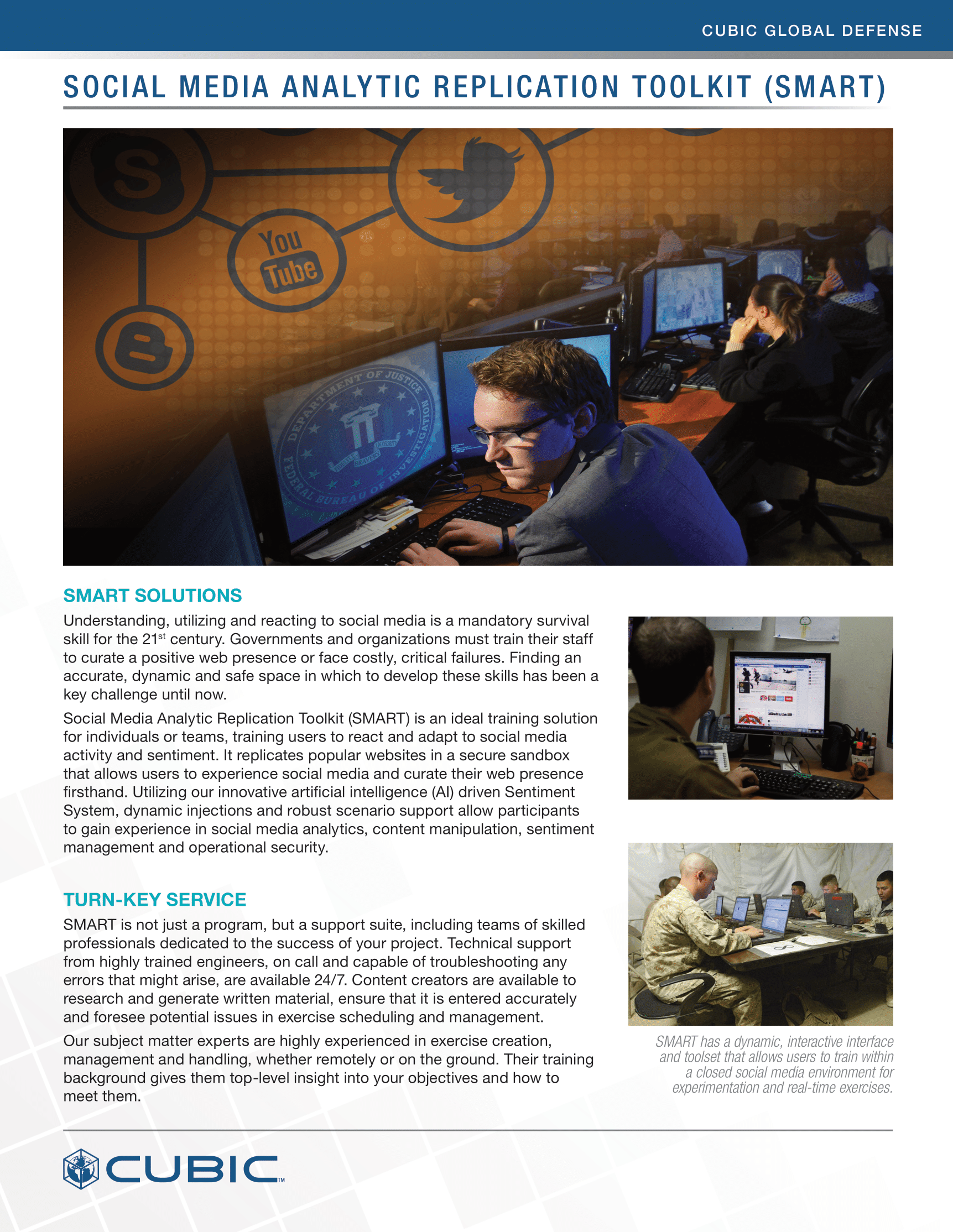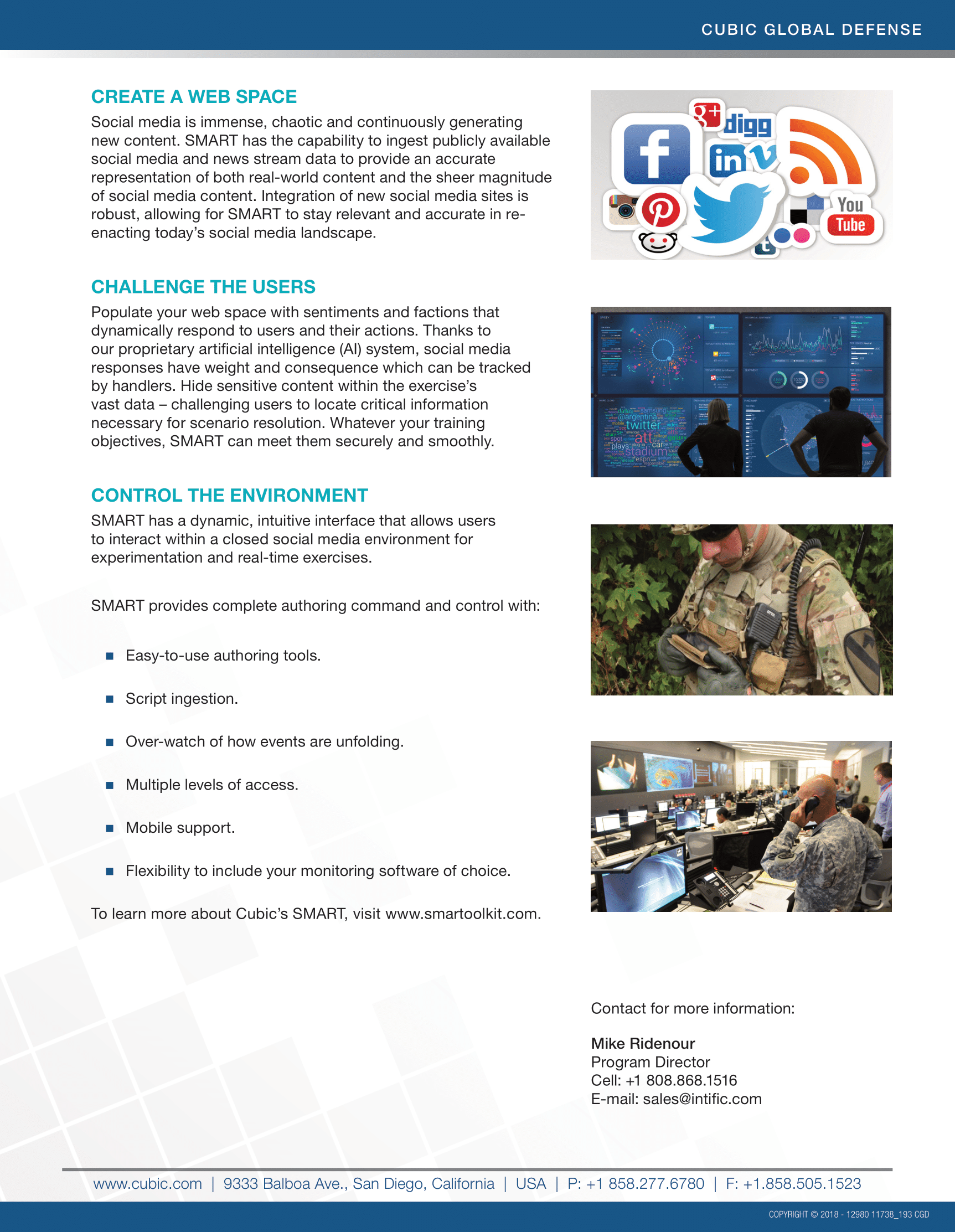Social Media Analytical Replication Toolkit (SMART)
ROLE: Design Director / Product Design
TEAM: 1x Product Designer, 2x Content Designers/Writers, 1x Project Manager, 2x Front-End Engineers
PROJECT LENGTH: 3 years
The Social Media Analytical Replication Toolkit (or SMART) was a project that transitioned from a DARPA project called Dynamic Social Media Environment (DSME). Very few DARPA projects transition from DARPA to the military, and SMART/DSME is one of those success stories.
SMART provided a synthetic simulation of the internet that allowed for the injection of manufactured content so that “needles “ could be hidden in the haystack to train special forces PsyOp operators to search for and find pertinent information without the risk of the training on the live internet.
SMART emulated several social media platforms, populating them with data sourced from the actual internet but sanitized via AI algorithms to remove “unwanted content.” This created replicas of popular sites, including Twitter, Facebook, Weibo, VK, and other social media and news platforms. SMART also had an email system, chat system, and marketplace to create a believable replica of the social aspects of the internet.
SMART would ingest the Master Scenario Events List (MSEL), a data-driven language for timed events, and create a timeline that would allow social media events to be triggered at crucial points along with it. SMART creates both automatic and handcrafted social networks of believable AI actors, enabling the liking, reposting, and sharing of content to mimic viral behavior across various social media platforms, such as news articles. A link to that article would appear on other social sites where it’s spread; the influence could be measured using a sophisticated suite of after-action report tools that kept track of the popularity and influence of every post made during the exercise.
SMART was designed to synchronize with Cubic Austin’s other training platform, SYN-ISR, allowing events in one to trigger events in the other. This enables more realistic training opportunities and reduces the costs and risks of military training by millions of dollars.


